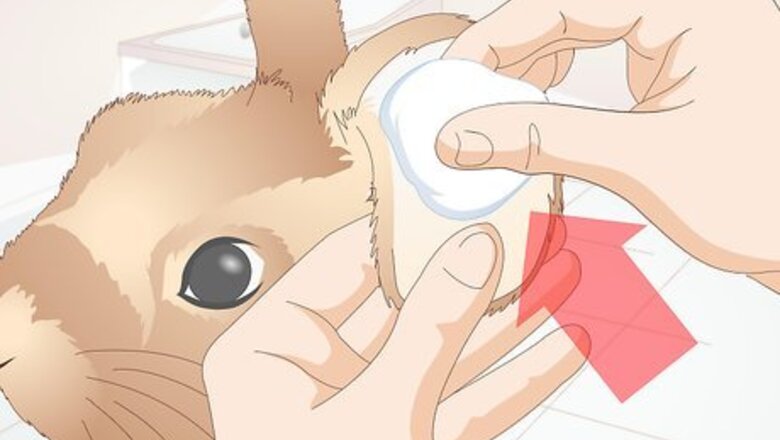
views
X
Research source
However, in order to keep your rabbit from the discomfort and illness associated with ear mites, it is possible to be proactive and prevent the infection from starting in the first place.
Preventing Ear Mites
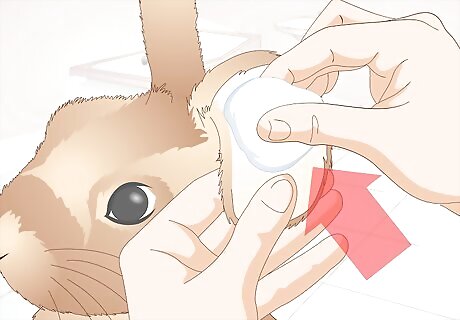
Clean your rabbit's ears regularly. Wipe out any debris with a clean soft cloth. You can add a few drops of an ear cleaner that is safe for cats or a few drops of baby oil or olive oil. Do not drench the cloth as you don't want the cleaner or oil to run down into your rabbit's ear. Do not use cotton swabs to clean out your rabbit's ears. These can go too far down your rabbit's ear canal and injure it ear drum. Instead, use a cloth or cotton ball and just clean the easily accessible areas of the rabbit's ears.

Keep your rabbit away from other rabbits you don't know. In order to avoid the risk of infection, keep your bunny away from other rabbits. This includes keeping it out of areas where wild rabbits might be frequenting outside. Only let your rabbit in areas or around other rabbits that are known to be mite free. If you have multiple rabbits and one is infected while the other is not, you need to keep the infected rabbit in isolation until the infection has been treated and is cleared up. Chances are, however, that if you have one infected rabbit, the other rabbits it lives with are also infected.
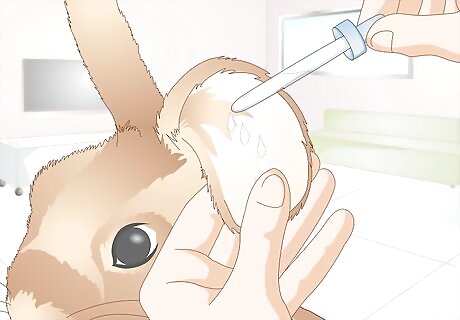
Apply a small amount of oil to your rabbit's ears regularly. You can place 3-4 drops of baby oil in the rabbit's ear to smother any stray mites that you may not be able to see. This will not hurt your rabbit's ears and it will help to prevent a full blown infection if a stray mite gets into your rabbit's ear. Ear mites are parasites, with the scientific name Psoroptes cuniculi, that crawl into the ears to feed. If you can stop them before they establish themselves and reproduce in the ear, that is ideal.

Keep an eye out for the symptoms of an infection. While the goal is to avoid seeing these signs because you have prevented an infection from occurring in the first place, you should know what to look for just in case. In addition to the thick, brown crust that lines the inside of the ears, there are other signs of ear mites in rabbits. These are: Itching around the ears, head and neck Head shaking Ear pain, swelling, or redness Ears fall down Weight loss Unsteadiness or falling over (sign of an inner ear infection)
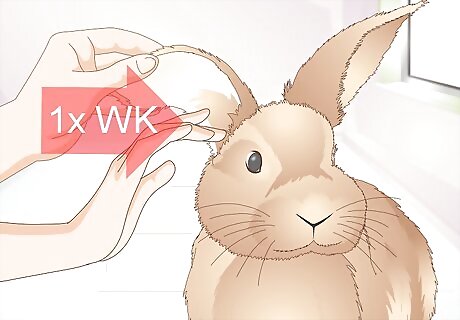
Check your rabbit's ears regularly. Make checking your rabbit's ears a weekly habit to stay on top of any of ear mite infection. Preventing your rabbit from acquiring a serious ear mite infestation is the best way to deal with ear mites.
Treating Ear Mites
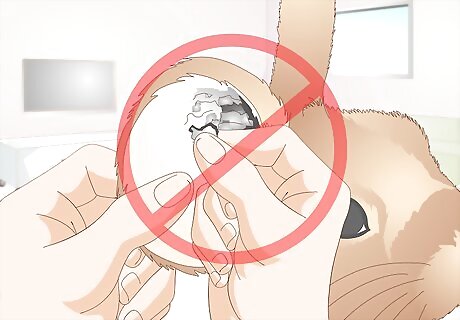
Do not remove the crust in your rabbit's ears. As ear mites feed, the ear tissue responds by producing a buildup of fluid and brown crust, which is commonly referred to as ear canker. Do not attempt to remove this crusty build up, as it can be very painful for the rabbit. Instead, the crust will come off on its own once the infection is treated and the mites are killed.

Take your rabbit to a veterinarian. If you see any signs of an ear mite infection you should get your rabbit checked by its vet. The vet will assess your rabbit's overall health but will also take a close look at the animal's ears. Your veterinarian should be able to diagnosis ear mites easily by looking in the ears and looking at a swab taken from the ear. Consult with your veterinarian for advice on treatment in any case where a rabbit has ear mites, but especially if it's a serious infestation.

Follow your veterinarian's treatment advice. Treatment of ear mites is done with medications that kill the ear mite. These include: Ivermectin injections under the skin done every two weeks for three to four times. Miticides, like those prescribed for dogs and cats, applied on the skin at the base of the neck repeated every 30 days.
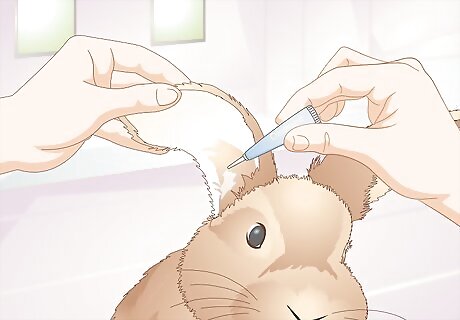
Treat any secondary infections as well. If the rabbit has any bacterial infection associated with its ear mite infection this will need to be treated separately with antibiotics. Your veterinarian will assess this situation and prescribe medication as needed. The mites can travel further into the ear causing an infection by bacteria called otitis externa. This infection can extend further down the ear, damage the ear drum, and cause an internal ear infection which is very serious. Apply the antibiotics for as long as it is prescribed to your rabbit. Using the medicine for too short of a time could limit its effectiveness.
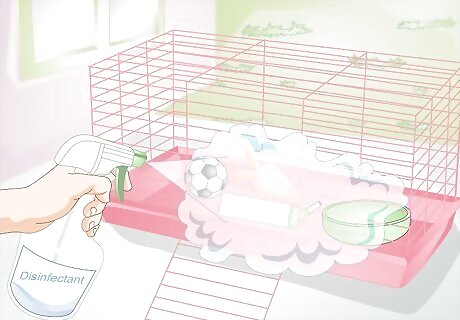
Clean all items used by infected rabbits. Hutches or any other plastic, wire or wood box that an infected rabbit has used will need to be cleaned and disinfected. First remove any bedding and poop along with any toys, feeders and waters. Throw away bedding and poop and anything that cannot be cleaned, such as cardboard boxes. Wash everything with warm water and soap, then disinfect with a diluted vinegar solution. You should also use this solution daily for a few weeks to wipe down all surfaces. You will also need to clean any other area the infected rabbit visited by sweeping or vacuuming once a day for a month. The crusts and scabs which fall off the ears may be harboring living mites and cleaning will remove them. Basically, you want all items that your rabbit comes into contact with to be disinfected or replaced.

Keep an eye on the recovery. Within 10 days of treatment the crusty lesions should begin to come off on their own. If the condition does not seem to be improving, or gets worse, you should take your rabbit back to the veterinarian for further treatment. Your veterinarian may recommend a return visit to make sure the infection has cleared up. The vet will probably do a physical examination and may do a swab to check for any remaining ear mites.












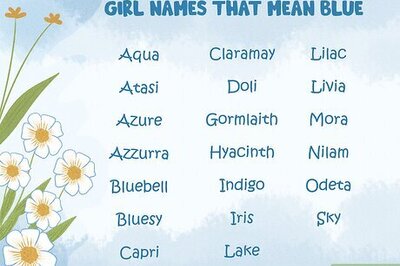




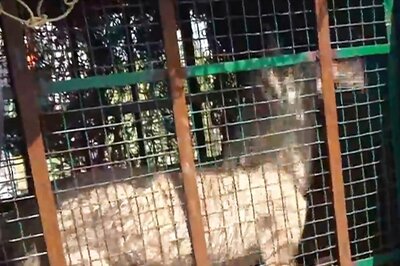

Comments
0 comment